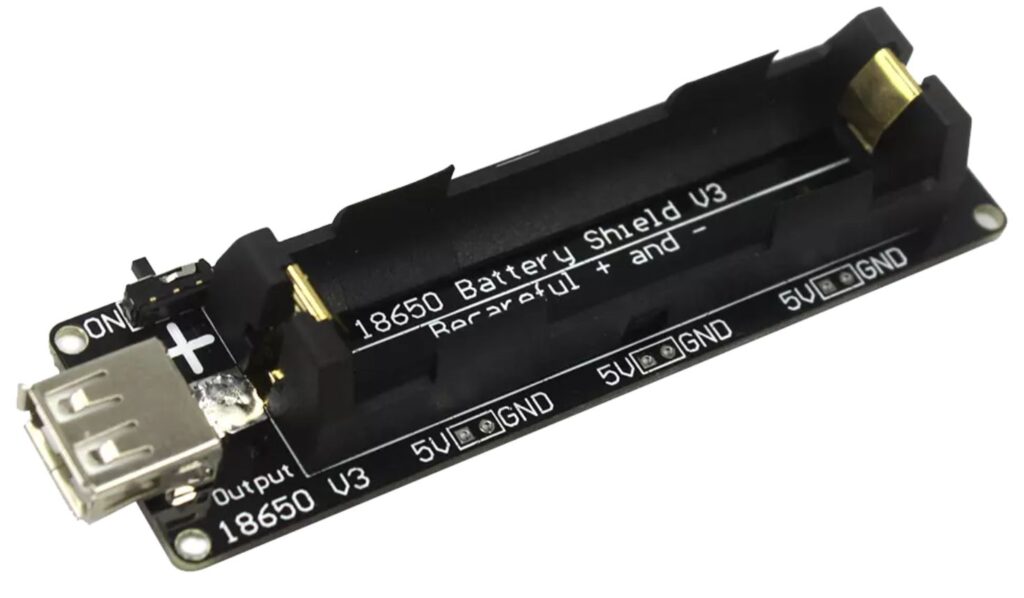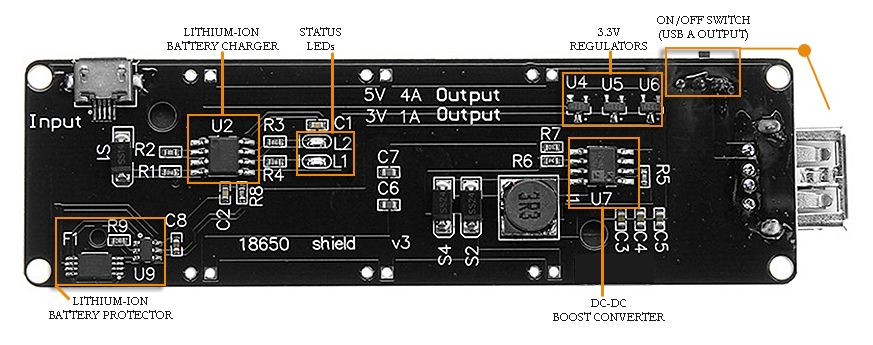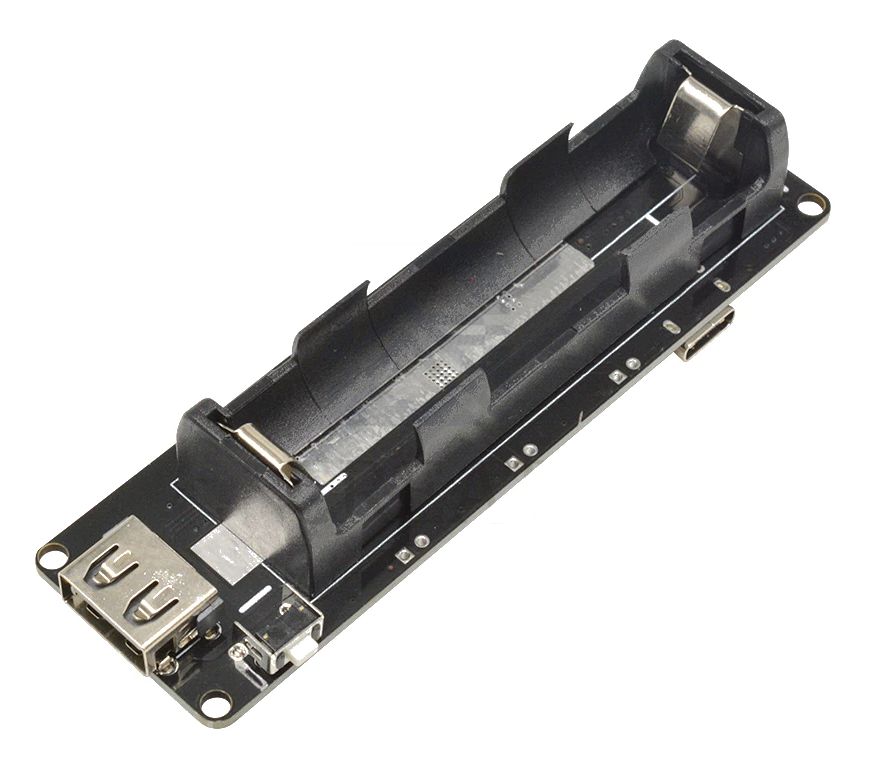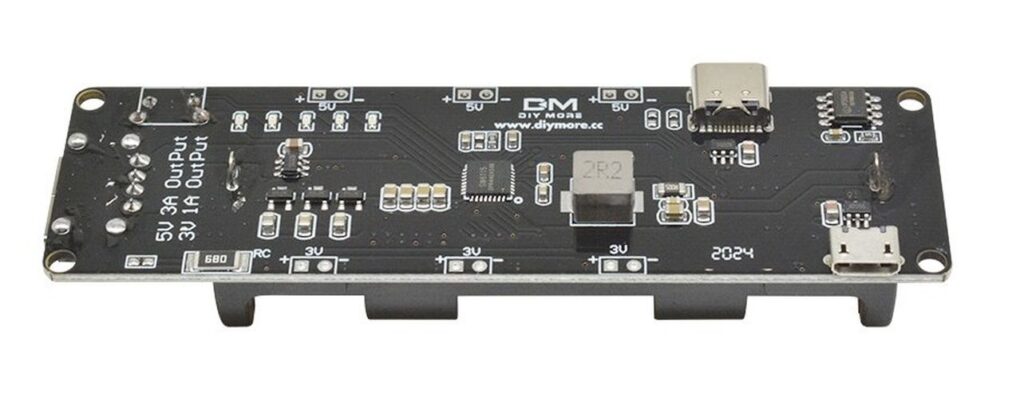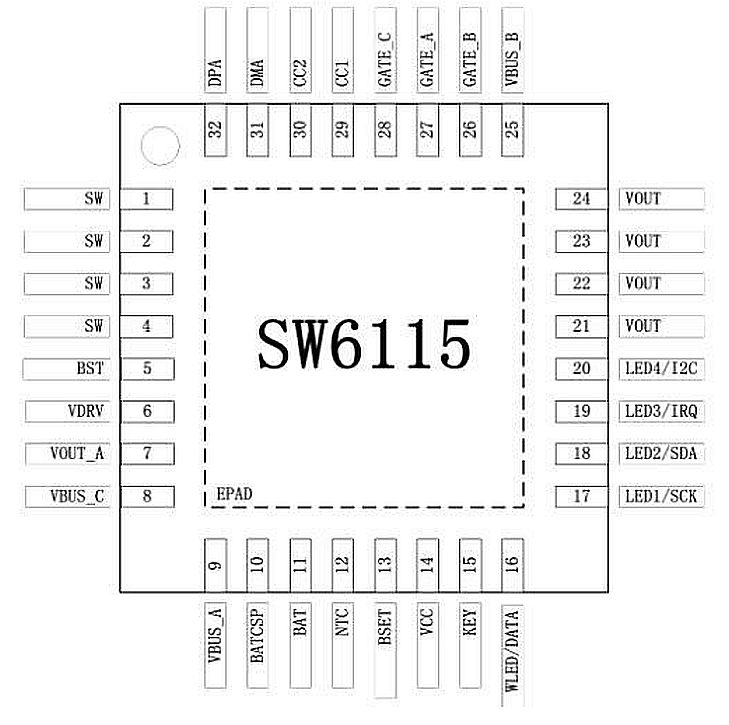Module – 18650 BATTERY SHIELD
Hardware
18650 Battery shield V3 module
The pictured shield holds a 18650 Li-Ion battery holder at the top of the circuit board, which can accommodate an ‘unprotected’ single-cell lithium-ion battery. It also includes a standard USB ‘A’ female connector, and one power on/off switch for that connector atop.
Now to its key specifications:
- Battery Charging Input: 5V/500mA typical via Micro USB port
- Power Supply Output: Switched 5VDC via USB type A port, 3x 5VDC (up to 4A) connectors, and 3x 3VDC (up to 1A)
- System Status Indicators: Battery Charging & Battery Charged LEDs
- Battery Protection Mechanism: Battery Overcharge & Deep Discharge
Here’s the bottom view of the 18650 shield. As you can see, almost all key parts are soldered neatly on the bottom side of the printed circuit board. The Micro USB port (labeled as Input) is the battery charger (5V/500mA) input socket.
The background electronics are a clever blend of three requisite circuits, that is to say, a lithium-ion battery charger circuitry, a battery protection circuitry, and a dc-dc boost converter circuitry. Refer to the annotated image provided below (and the table next to it) to get a deep insight on the underlying electronics.
| COMPONENT | DESCRIPTION |
| U9 = DW01V | 1S Li-Ion battery protection chip |
| F1 = 8205A | Dual N-Channel MOSFET |
| U2 = TC4056A | 1S Li-Ion battery charger chip |
| U7 = FP6298 | 4.5A current mode dc-dc boost converter chip |
| U4,U5,U6 = 662K (XC6206xxxx) | Positive voltage regulator chip (3.3V) |
| L1 = Green LED | Battery CHGD indicator |
| L2 = Red LED | Battery CHRG indicator |
| S1,S2,S4 = Schottky Diodes | S1 = SS14 & S2,S4 = SS24 |
In the shield, the dc- dc boost converter chip is used to deliver 5VDC (actually 4.99V) through the USB ‘A’ socket and 5V male-header points, generated from the available 3.7V-4.2VDC Li-Ion battery output. The second channel output, marked as 3V but 3.3V on the dot, is supplied by the parallel combination of three positive voltage regulator chips. The 3.3VDC supply is derived from the 3.7V-4.2VDC Li-Ion battery output (not from the 5VDC output).
source: https://www.electroschematics.com/battery-shield/
18650 Battery shield V3 module USB-C
It holds a single 18650 battery and can supply regulated 5.0 and 3.3 volts. It claims to be able to provide 5 volts at 3 amps and 3 volts at 1 amp. Note that if you install the battery backwards, you will destroy the unit.
There are several different units being offered for sale that look quite similar. The above images are from the listing of the one I purchased. Note that it has what looks like a USB-C connector that is not mentioned anywhere in the listing.
I was pleased to find, after the unit arrived that the 3 volts is in fact 3.3 volts (I measure 3.31 volts on one of my units).
Several things concern me. The first is the 5 LED that light up when you push the button. These are probably consuming at least an order of magnitude more power than the devices I am hoping to use this with, so they will need to be disabled.
The second thing is the button itself. Some of my units power off after 40 seconds if no load is attached (one does not). They all seem to behave just fine with a load attached to the USB-A port, we will have to see about an ESP8266 on one of the 3.3 volt pads. The project I have in mind goes into deep sleep and runs briefly at once per minute. This may not play well with this power supply having a 40 second timeout.
The heart of the thing is a chip marked “SW6115”, near the other end of the board is an 8 pin chip labeled IP3005A. It looks to be a charge management chip for if and when the battery is charged via the micro-USB connector.
It looks like the 3.3 volt supply is derived from the 5 volt supply via 3 regulators in parallel. I am unsure how this will work out for ultimate battery life with a 3.3 volt device being powered. Only some experimentation will tell the story.
Pinout
Raspberry Pi
GEEN GEGEVENS
Drivers
GEEN GEGEVENS
Schema
GEEN GEGEVENS
Teardown
GEEN GEGEVENS
Datasheet
Fritzing
GEEN GEGEVENS
Downloads
GEEN GEGEVENS


